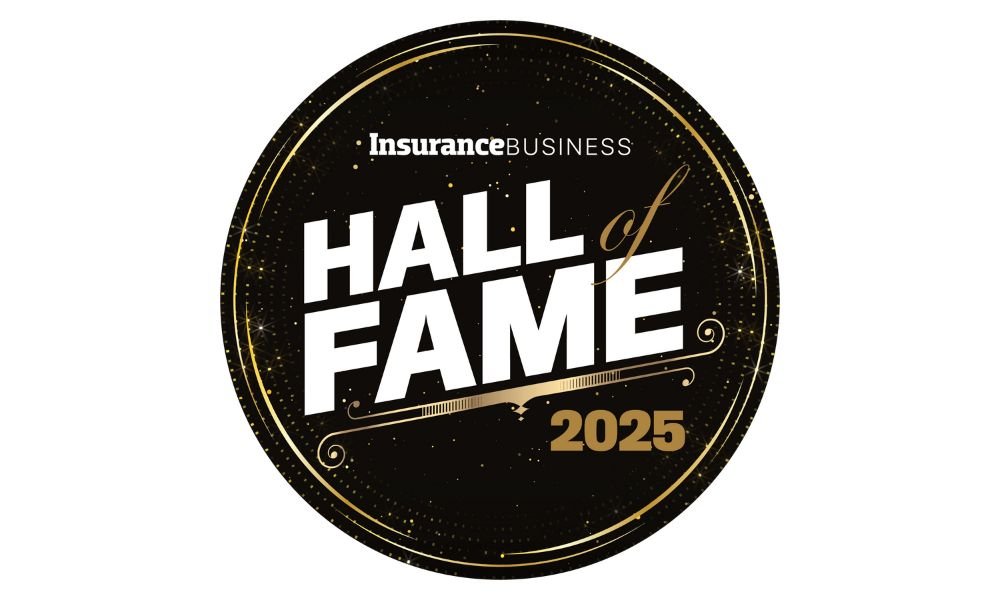Owning a home in Ohio comes with a sense of pride and security. Your homeowner’s insurance policy is a key part of that security, acting as a financial safety net against unexpected disasters. But what happens when you discover that your policy doesn’t cover the specific damage your home has sustained? Many homeowners mistakenly assume their standard policy is a catch-all, only to face a harsh reality when they file a claim.
Understanding what your policy excludes is just as important as knowing what it covers. This guide will walk you through the common home insurance exclusions in Ohio, helping you identify potential gaps in your coverage. We’ll explore why these events aren’t covered and what steps you can take to protect your home and finances.
Why Do Policies Have Exclusions?
Insurance is built on managing risk. Some events are so widespread, expensive, or predictable that including them in a standard policy would make premiums unaffordable for everyone. Insurers exclude these high-risk or maintenance-related issues to keep standard policies accessible. For many of these exclusions, specialized, separate policies are available for purchase.
Common Home Insurance Exclusions in Ohio
While every policy is different, most standard homeowner’s insurance (like an HO-3 policy) in Ohio will not cover the following events.
Flood Damage
This is the most common and often most surprising exclusion for homeowners. Standard home insurance policies do not cover damage caused by flooding. This includes water from overflowing rivers, heavy rains that saturate the ground, storm surges, or rapid snowmelt.
- Why it’s excluded: Widespread flooding can cause catastrophic damage to entire communities, making it an immense financial risk for a single insurer to cover under a standard plan.
- How to get coverage: You can purchase a separate flood insurance policy through the National Flood Insurance Program (NFIP) or a private insurer. Even if you don’t live in a designated high-risk flood zone, it’s wise to consider this coverage, as many flood claims occur in low-to-moderate risk areas.
Earthquake and Earth Movement
Ohio may not be California, but it does experience seismic activity, particularly along the New Madrid Seismic Zone. Unfortunately, damage from earthquakes, tremors, mudslides, or other forms of earth movement is excluded from standard home insurance.
- Why it’s excluded: Like floods, earthquakes can cause widespread, devastating damage that is too costly for standard policies.
- How to get coverage: You can add an “earthquake endorsement” to your existing policy or buy a separate earthquake insurance policy. This will cover repairs to your home’s structure and replace personal belongings after a quake.
Maintenance and Neglect-Related Issues
Your home insurance policy is designed to cover sudden and accidental damage, not issues that arise from a lack of upkeep. Problems that could have been prevented with regular maintenance are your responsibility as a homeowner.
Common examples include:
- Pest Infestations: Damage from termites, rodents, or other vermin is considered a preventable maintenance issue.
- Mold: If mold results from a sudden, covered peril (like a burst pipe), it may be covered. But if it grows over time due to a slow leak or high humidity you didn’t address, the removal cost is on you.
- Wear and Tear: An old roof that fails due to age or a furnace that stops working because it’s past its lifespan is not covered.
- Why it’s excluded: Insurers expect homeowners to perform regular upkeep to prevent predictable problems. Covering these issues would create a moral hazard, where homeowners might neglect their property knowing insurance would pay for repairs.
- How to protect yourself: Create a home maintenance checklist. Regularly inspect your roof, foundation, plumbing, and HVAC systems. Address small leaks immediately and be proactive about pest control.
High-Value Personal Property
Your policy includes coverage for personal belongings, but there are usually strict limits on expensive items. Jewelry, fine art, collectibles, firearms, and high-end electronics often have a coverage cap that is much lower than their actual value. For example, a policy might only cover up to $1,500 for stolen jewelry, even if your collection is worth $10,000.
- Why it’s excluded: Insuring these items at their full value under a standard policy would require higher premiums for everyone, including those who don’t own such items.
- How to get coverage: You can purchase a “scheduled personal property” endorsement or floater. This add-on coverage provides specific, itemized protection for your valuable possessions at their appraised value.
Sewer and Water Backup
Imagine a city sewer line backing up and flooding your basement. The resulting damage and cleanup are messy, expensive, and typically not covered by a standard home insurance policy. This exclusion applies to water that backs up through sewers, drains, or overflows from a sump pump.
- Why it’s excluded: These events are often linked to municipal infrastructure or plumbing issues outside the home’s immediate system, placing them outside the scope of typical property risk.
- How to get coverage: A “water backup and sump pump overflow” endorsement is an affordable and highly recommended addition to your policy. It can save you thousands of dollars in a very unpleasant situation.
Nuclear Hazard, Government Action, and War
While highly unlikely, these large-scale, catastrophic events are universally excluded from home insurance policies. This includes damage from nuclear radiation, military action, or seizure of property by a government entity.
- Why it’s excluded: The potential for damage is immeasurable and so widespread that no private insurer could cover the losses.
- How to protect yourself: There is no specific insurance you can buy for these events. They are considered fundamentally uninsurable risks.
Take Action: Review Your Policy Today
The single best thing you can do to protect your home is to understand your insurance coverage. Don’t wait until you need to file a claim to discover what’s missing from your policy.
Take a few minutes this week to pull out your homeowner’s insurance documents. Read through the “Exclusions” section carefully. If the language is confusing or you’re unsure about your coverage, don’t hesitate. Call your insurance agent and ask for a detailed review. Discuss your specific concerns, whether it’s your grandmother’s jewelry or the creek behind your house.
Your agent can help you identify gaps and find the right endorsements or separate policies to ensure your largest asset is properly protected. A little bit of prevention now can save you from financial disaster later.
Frequently Asked Questions: What Home Insurance in Ohio Doesn’t Cover
1. Does home insurance in Ohio cover flood damage?
No, standard home insurance policies in Ohio do not cover damage caused by flooding. For flood protection, you need a separate flood insurance policy, which is typically available through the National Flood Insurance Program (NFIP) or private insurers.
2. Does home insurance cover earthquake damage in Ohio?
No, earthquake damage is not covered by standard home insurance in Ohio. If you live in an area that could experience earthquakes, you should consider purchasing earthquake insurance as an add-on to your policy.
3. Is water damage from a sewer backup covered?
Water damage from a sewer backup is typically not covered under a standard home insurance policy. However, you can purchase sewer backup coverage as an endorsement to your policy to protect against such damage.
4. Are mold damages covered by home insurance?
Mold damage is not typically covered unless it results from a covered peril, such as a burst pipe or a leaky roof. However, mold removal and remediation may not be covered if the mold is due to long-term neglect or lack of maintenance.
5. Does home insurance cover maintenance-related issues?
No, home insurance is designed to cover sudden and accidental events, not regular wear and tear or maintenance issues. Things like a leaky roof due to lack of maintenance or broken appliances are typically not covered.
6. Are personal belongings damaged by pets covered?
Damage caused by your own pets, such as chewing or scratching furniture, is generally not covered by home insurance. However, if your pet injures someone or causes property damage to a third party, your liability coverage might apply.
7. Does home insurance cover damage from high winds or hail?
Yes, most home insurance policies in Ohio typically cover damage caused by windstorms and hail. However, damage from a tornado may require additional coverage, and certain exclusions may apply, such as for high-value items or detached structures.
8. Does home insurance cover damage from termites or other pests?
No, damage caused by termites or other pests is generally not covered under a standard home insurance policy. Pest infestation falls under maintenance and prevention, which homeowners are responsible for.
9. Is identity theft protection covered?
Most standard home insurance policies do not cover identity theft or fraud protection. However, some insurers offer add-on coverage for identity theft, so you may want to check with your provider for details.
10. Is theft outside of my home covered?
Personal property stolen outside your home (such as from a car or while traveling) may be covered under your home insurance policy’s off-premises personal property coverage. However, it’s important to confirm the limits with your insurer, as this may vary.
11. Does home insurance cover damages caused by war or terrorism?
No, most home insurance policies exclude damages caused by war, terrorism, or civil unrest. These types of events are typically excluded from coverage due to their catastrophic nature.
12. Are trees and landscaping covered?
Damage to trees, shrubs, or landscaping caused by vandalism, fire, or a covered peril (like lightning) may be covered under a standard policy. However, coverage for damage from windstorms or hail might have limited protection.
Read More:
- Do I Need Travel Insurance for Europe? Understanding the Essentials
- Know How much is Flood Insurance in North Carolina?
- How to Calculate Insurance Rate Per $1000 in California
- The Essential Small Business Insurance Checklist for Owners in Ohio
- Understanding the Need for Both Commercial and Personal Auto Insurance in Needham




